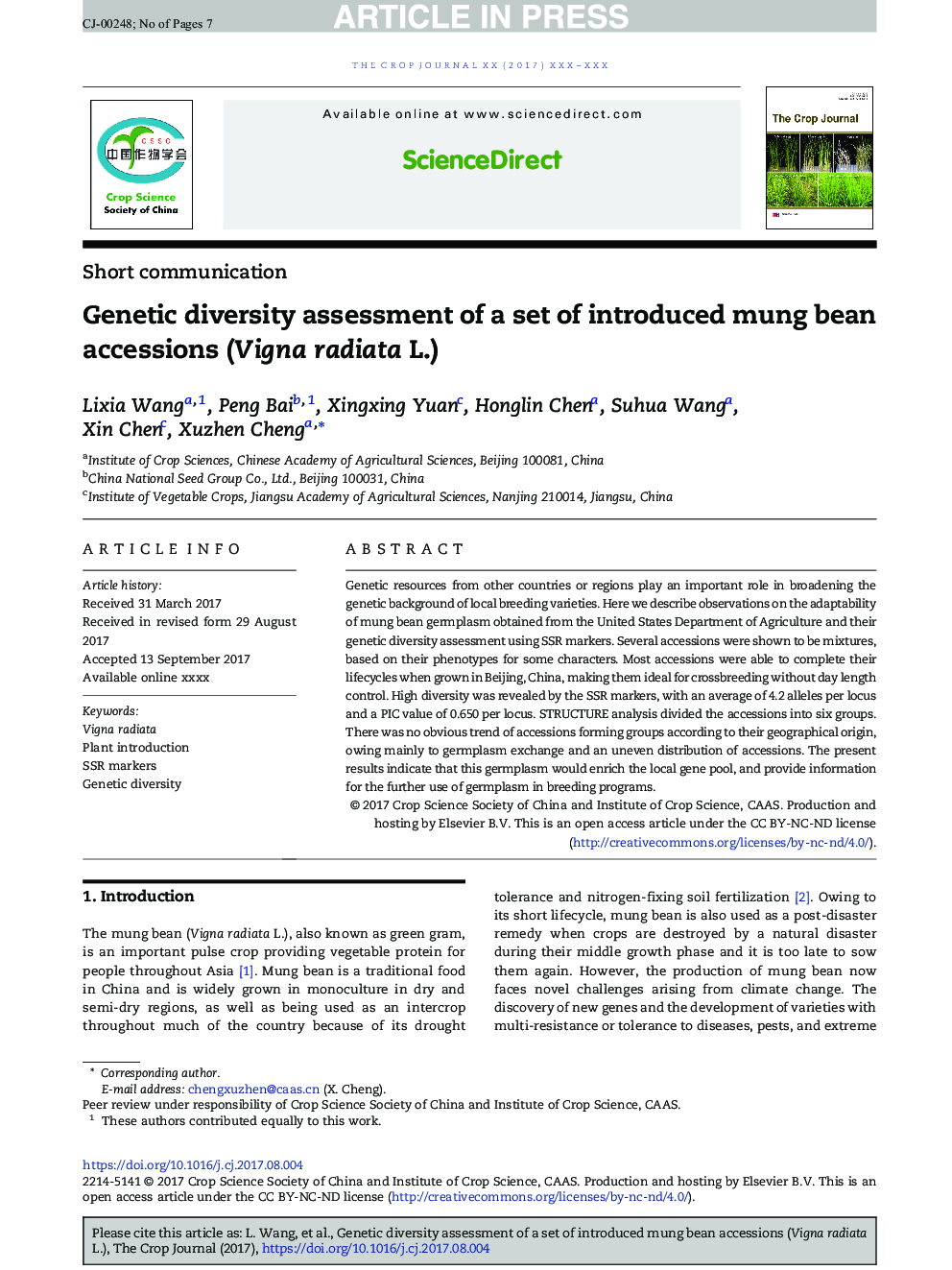| Article ID | Journal | Published Year | Pages | File Type |
|---|---|---|---|---|
| 8408777 | The Crop Journal | 2018 | 7 Pages |
Abstract
Genetic resources from other countries or regions play an important role in broadening the genetic background of local breeding varieties. Here we describe observations on the adaptability of mung bean germplasm obtained from the United States Department of Agriculture and their genetic diversity assessment using SSR markers. Several accessions were shown to be mixtures, based on their phenotypes for some characters. Most accessions were able to complete their lifecycles when grown in Beijing, China, making them ideal for crossbreeding without day length control. High diversity was revealed by the SSR markers, with an average of 4.2 alleles per locus and a PIC value of 0.650 per locus. STRUCTURE analysis divided the accessions into six groups. There was no obvious trend of accessions forming groups according to their geographical origin, owing mainly to germplasm exchange and an uneven distribution of accessions. The present results indicate that this germplasm would enrich the local gene pool, and provide information for the further use of germplasm in breeding programs.
Related Topics
Life Sciences
Agricultural and Biological Sciences
Agronomy and Crop Science
Authors
Lixia Wang, Peng Bai, Xingxing Yuan, Honglin Chen, Suhua Wang, Xin Chen, Xuzhen Cheng,
